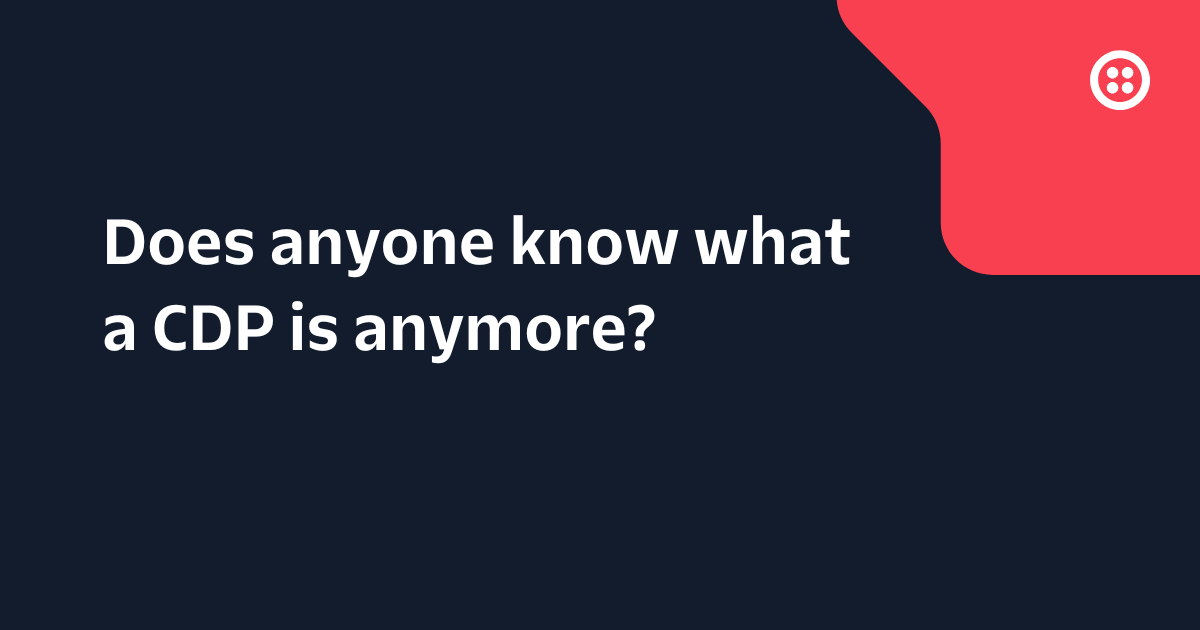COVID-19: Best Practices for Public Health Crisis Communications
Time to read: 5 minutes

As the global government, health, and nonprofit communities work together to stop the spread of COVID-19, we at Twilio have been looking for the best way we can do our part to help people affected by the virus and keep each other safe.
Communications play a critical role in how agencies provide public health information, keep constituents up to date on a continually evolving situation, and provide quality care. For this reason, we believe one of the best things we can do to help is to share best practices for using technology to deliver these critical messages. Digital tools and on-demand infrastructure can help organizations rapidly and cost-effectively scale response, as well as iterate quickly on what's working best to serve constituents.
In this blog post, we’ll share the top ways we’re advising our partners in the government, health, and nonprofit sectors to use communications and engagement best practices to address the Coronavirus. We’ll also provide resources to get started building these communications workflows. If your organization would like more guidance on how to build solutions or would like to partner together on your work addressing the outbreak, we’re here to help. Reach out to us here.
Communication best practices for agencies working to contain COVID-19
Here are four ways that public services, health organizations, and NGOs can apply communications to improve their COVID-19 response initiatives:
1. Reduce public health hotline backlogs and wait times
No one likes to wait for answers to questions regarding health issues, especially when there is a lot of uncertainty and conflicting information circulating the internet about COVID-19. The most efficient organizations use Interactive Voice Response (IVR), chatbots, and artificial intelligence to understand if an inbound request should receive an automated response. For instance, repeated questions like, “How do I keep my family safe?” could receive automated answers.
More specific or complex conversations typically require the personal attention of a staff member with specialized training. For example, your organization may need to escalate a call to video to remotely screen patients who self-identify as showing symptoms of the virus.
Deploying automated chatbots and other self-service capabilities to share public service information and answer frequently asked questions will put the right information in the hands of citizens faster and more efficiently, while freeing specialists to tackle the complex requests only they can handle. That means faster service for everyone.
Resources for getting started:
- Interactive Voice Response (IVR) best practice guide
- How to use programmable video for telehealth
- Building an emergency contact center
2. Combat misinformation about the virus with proactive alerts
All you have to do is look to your local grocery store pantry aisle or review local event cancellations to see that people are concerned about COVID-19. Much of this concern is stemming from uncertainty about which information to believe and speculation about how the crisis will progress. The World Health Organization (WHO) has referred to the harmful spread of misinformation about the virus as an “infodemic.”
Proactive SMS, voice and email notifications enable organizations to keep their constituents up to date on the latest information based on trusted sources of public health. As a trusted government, health or nonprofit organization, when you deliver information directly from your organization into the hands of the people who need it most, you will help cut through the fog of unfiltered social media speculation.
Resources for getting started:
- Messaging toolbox for developers
- How to send bulk notifications via API developer tutorial
- Voice alerting with Twilio <Say> docs
3. Reach more people in affected areas by using preferred communication channels
Effective containment of the virus is largely dependent on providing everyone in Coronavirus-affected areas with the right trusted information to protect themselves and their families. This requires delivering your message over channels where end-users in need of assistance prefer to communicate.
For instance, some users prefer using SMS while others like email, making phone calls, engaging in video consultations, or conversing with automated chatbots. Often, the urgency of the situation dictates how a person would like to be engaged. It’s best practice to ask your customers and community what channels they prefer whenever possible and ensure you’re respecting their preferences during your outreach.
While many organizations offer phone systems, adding video, SMS and chat options can make your service more accessible to more people. The retail and technology industries deploy this omnichannel approach to drive up customer satisfaction, and organizations addressing public health can utilize the same technology and tactics to grow the number of people you can serve.
Resources for getting started:
- Building omnichannel customer journeys guide
- SMS and MMS notifications tutorial
- Communication preferences by generation article
4. Automate patient appointment reminders and scheduling
If you are treating people who need assistance, you likely incur a large operational burden around managing their appointments. One of the most effective ways we’ve seen public and health organizations use technology to lower operational expenses is by automating this process.
You can set up reminders via email, text, and/or voice to reduce no shows and ensure that appointment slots which are canceled can be offered to others. Many organizations also offer a text in option to schedule appointments in the first place. For organizations working with populations outside of the U.S, adding WhatsApp beyond SMS is another great way to ensure you’re reaching your patients where they are and driving high participation rates in appointments.
Resources for getting started:
Protecting patient information
Before applying these best practices and architecting solutions, please note that communication workflows containing Protected Health Information (PHI) are regulated under the Health Insurance Portability and Accountability Act (HIPAA) in the United States. As a result, you’ll have to ensure that the technology you use when including PHI in your messages complies with the security and privacy requirements set forth by this regulation or its counterpart in your country.
For instance, a discussion about a patient’s symptoms with their care provider would include PHI. A notification of best practices or public service announcements around washing hands and not touching your face would not include PHI. To ensure PHI is secure, some organizations use notifications without any PHI to link patients to a secure HIPAA compliant portal where they can access protected information.
Following the trends
Providing more accessible, proactive communications options isn’t just the right thing to do—industry trends indicate that these practices are making their way into the mainstream.
For example, congressional legislation including the 21st Century IDEA Act and the Connected Government Act set a baseline approach for modernizing communications by encouraging increased mobile access to contact centers and the digitization of customer service in public services. In addition, cross-agency teams like GSA’s Centers of Excellence for Customer Experience and Contact Center Modernization, along with the U.S. Digital Service, are providing support to execute on these new technology initiatives.
The result of these efforts, combined with those in the corporate communications space, can greatly expand and achieve the full potential of the types of public services that each individual affected by this virus deserves.
We invite government agencies, health organizations, and NGO first responders to reach out to Twilio for more information about how an omnichannel approach to communications can aid their efforts to combat the spread of COVID-19 and ensure that citizens have access to information they need, when and where they need it most. We’re here to help.
Related Posts
Related Resources
Twilio Docs
From APIs to SDKs to sample apps
API reference documentation, SDKs, helper libraries, quickstarts, and tutorials for your language and platform.
Resource Center
The latest ebooks, industry reports, and webinars
Learn from customer engagement experts to improve your own communication.
Ahoy
Twilio's developer community hub
Best practices, code samples, and inspiration to build communications and digital engagement experiences.


